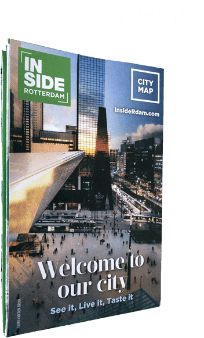Allseas is a world-leading contractor in the offshore energy market. In Rotterdam, the Bluemarine Offshore Yard Service is the logistics center for project materials and vessel consumables and provides storage and maintenance of the equipment used in projects. It also presented its latest waste collection system here. Catchy 2 accumulates plastics and other trash from the Nieuwe Maas River.
Located under Rotterdam’s Erasmus Bridge, the system operates 24 hours a day, 7 days a week. Collecting both floating and submerged waste before it flows out into the North Sea and ultimately our oceans, threatening the environment, marine life and human health. Catchy 2 works entirely on tide and current. Thanks to its robust design it is not limited by weather conditions.
“Working every day at sea, we are committed to the effort to clean our oceans by developing systems to collect waste in rivers and waterways before it can spread to our oceans”, says Edward Heerema, President and CEO of Allseas at the ceremony. “With Catchy 2 at this central location in Rotterdam, we are raising awareness that reducing plastic pollution in our rivers and oceans requires a collective approach if they are to succeed.”
The Rotterdam Vice Mayor for Sustainability Arno Bonte welcomes the new plastic catcher with open arms. “Rotterdam is committed to making the North Sea plastic-free, together with residents and businesses. That starts with using less plastic and preventing plastic from ending up in the water. The final link in the chain is plastic catchers. Which collect plastics in our rivers before it ends up in the sea.”
How Catchy 2 works
The system comprises three key components: two floating booms, a collection cage, and a floating frame. The booms guide waste floating on and below the surface into the collection cage. When full, the cage is emptied and the waste recycled. The collected plastic is used for the production of concrete blocks for quay protection.















